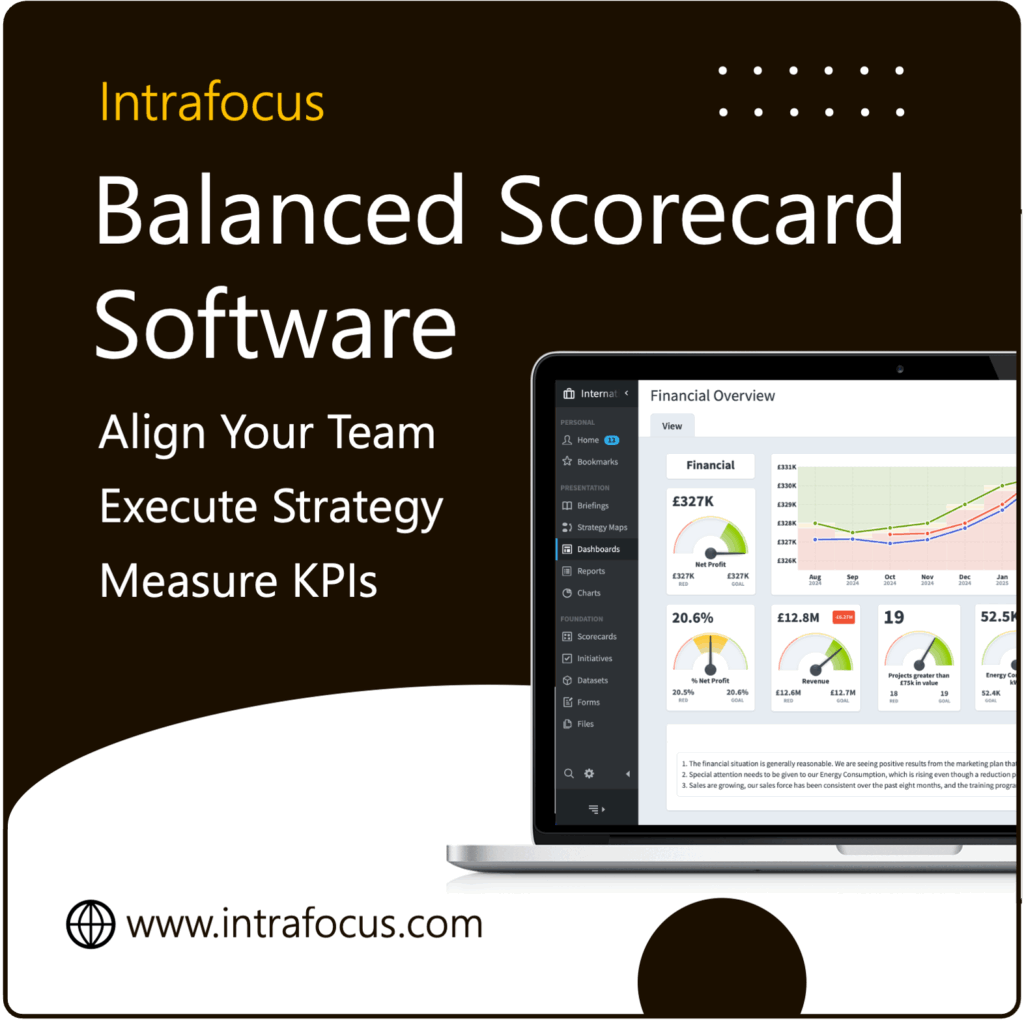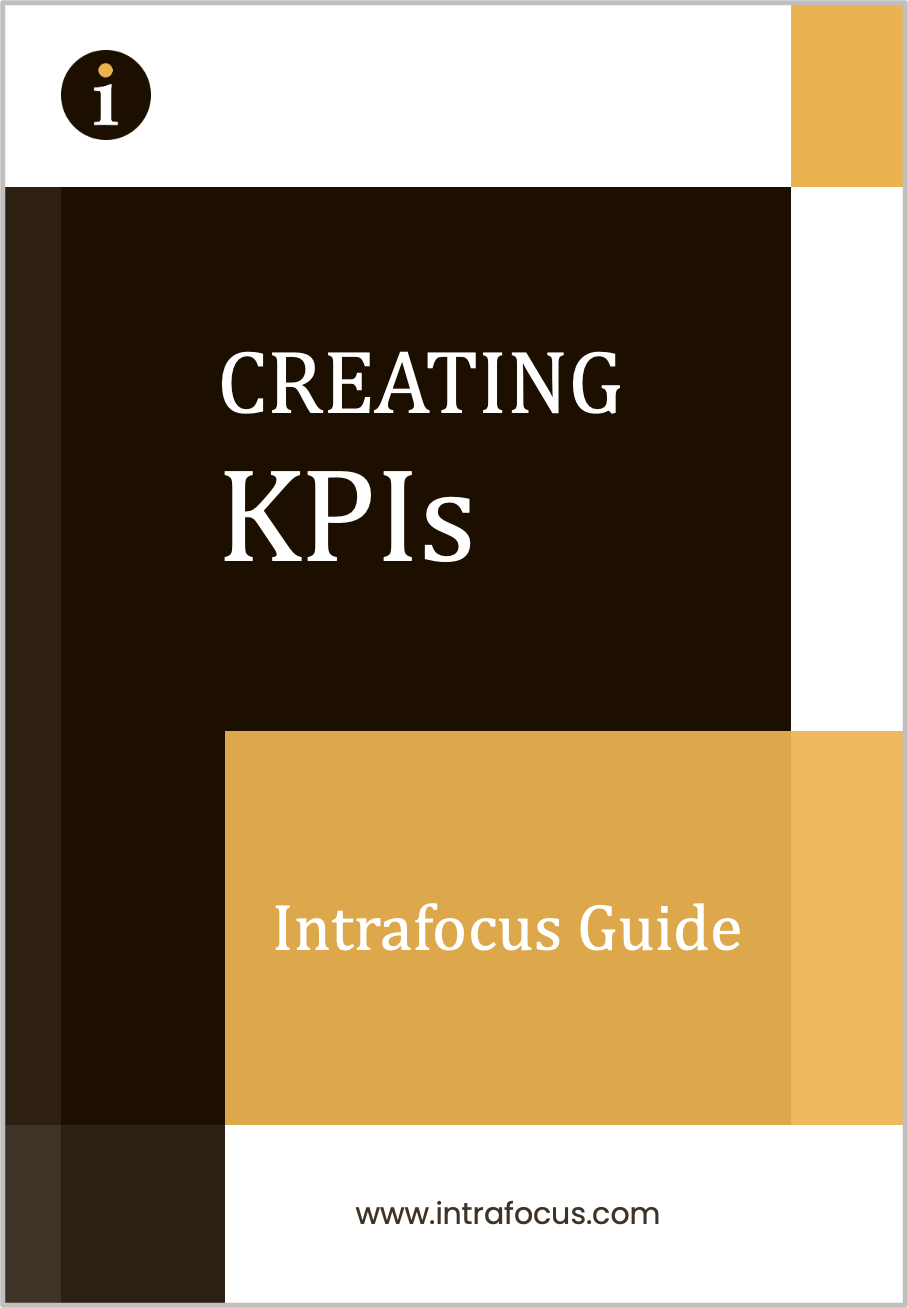Artificial intelligence is one of the most talked-about business topics today. However, when it comes to strategy, many leaders ask the same question: how can AI improve strategic planning? AI is neither a silver bullet nor a replacement for leadership judgment. Instead, it is a tool that can sharpen thinking, uncover insights, and make execution more reliable.
At Intrafocus, we work with organisations to ensure their strategies are both clear and actionable. The Balanced Scorecard and our Seven-Step Strategic Planning Process provide the structure. AI adds speed, foresight, and data-driven intelligence to that structure. The result is smarter planning and more disciplined execution.
But what if you don’t use AI? Will your strategy fail? And how can your organisation make AI fit naturally into your process, whilst remaining a human-designed plan?
Why Strategy Still Fails Without AI
Strategies fail not because the vision is flawed but because the execution process is flawed. Priorities are unclear, decisions take too long, and teams are overwhelmed by data that is either incomplete or irrelevant. Traditional planning methods, while valuable, often struggle to keep pace with today’s level of complexity and the sheer volume of information available.
AI can change that. By quickly processing vast amounts of data and spotting patterns that humans might miss, AI provides leaders with foresight that would otherwise take weeks or months to develop. It can highlight risks before they become critical and suggest options that align closely with strategic priorities.
Without AI, organisations are left to rely on spreadsheets, manual reports, and instinct. These tools still have a place, but rarely provide the clarity needed to adapt quickly. When AI is introduced, the noise is reduced and the signal becomes clear. This means leaders spend less time searching for answers and more time focusing on execution.
AI and The Seven-Step Strategic Planning Process
The Seven-Step Strategic Planning Process developed by Intrafocus connects vision to measurable results. It ensures strategy moves from big ideas to daily execution. Let’s break down how AI can strengthen each stage by adding foresight, speed, and intelligence:
Foundation: Strategy begins with vision and purpose. AI can scan the external environment, monitor stakeholder sentiment, and track industry signals, helping leaders test whether their vision aligns with reality.
Assessment: AI can support advanced customer feedback analysis, competitor activity, and external data sets. It can even model potential value propositions to see how they may play out.
Strategic Objectives: Objectives provide direction. AI helps refine these by highlighting patterns in performance data and external trends. For example, if customer churn rises, AI may suggest retention or service innovation objectives.
Key Performance Indicators (KPIs): Selecting the right KPIs is notoriously difficult. AI can analyse historic data to uncover which measures truly predict success.
Initiatives: AI tools can model potential impact, optimise resource allocation, and assess risks, ensuring the most valuable initiatives are prioritised.
Communication: Communication ensures everyone understands the strategy. AI-driven dashboards and reporting tools can personalise insights for different audiences, while natural language tools can turn complex analysis into clear updates.
Automation: The final step is automation. Tools like Spider Impact already connect strategy to performance. AI integration adds predictive alerts, automated reporting, and anomaly detection, helping leaders respond faster to change.
By weaving AI into each of these seven steps, organisations can build well-structured, dynamic, and resilient strategies. Leaders remain firmly in control, while AI provides the intelligence to act confidently.
Enhancing the Balanced Scorecard with AI
The Balanced Scorecard remains one of the most reliable frameworks for connecting strategy to performance. It translates vision into action across four perspectives: Financial, Customer, Internal Processes, and Organisational Capacity. AI does not replace this structure but strengthens it by providing better data and sharper insights.
Financial: AI-driven forecasting tools can model revenue, cost, and risk scenarios with greater accuracy. They help leaders test assumptions quickly and respond to changing market conditions.
Customer: AI tools can analyse customer feedback, social media sentiment, and behavioural data at scale. This allows organisations to anticipate customer needs, predict churn, and personalise services in ways that strengthen loyalty.
Internal Processes: Operational efficiency often determines success or failure. AI can monitor real-time processes, identify bottlenecks, and detect anomalies before they escalate. This reduces waste and improves consistency.
Organisational Capacity: This perspective covers people, knowledge, IT, and infrastructure. AI enhances learning platforms with personalised recommendations, strengthens IT systems through predictive maintenance, and helps leaders allocate resources more intelligently.
When combined with the Balanced Scorecard, AI ensures each perspective is monitored with historical data and predictive insight, creating a more adaptive performance management system.
Practical AI You Can Use Today
For many leaders, AI still feels abstract. However, practical applications are already available, often with minimal disruption to existing systems.
Predictive KPIs: AI can identify patterns in operational data to create early-warning indicators. For example, changes in customer support response times may predict rising dissatisfaction.
Market and Customer Insights: By analysing external data sources, AI can highlight emerging trends and competitor activity, giving leaders a head start on market shifts.
Automated Reporting: Instead of teams spending hours preparing reports, AI tools can generate clear dashboards in real time, freeing staff to focus on execution.
Industry research confirms the value of these approaches. McKinsey notes that AI is already transforming how organisations model strategic options and anticipate risks. Similarly, MIT Sloan Management Review shows how AI-supported KPIs help leaders align metrics more closely with outcomes. AI is not an abstract future technology. It is a set of practical tools organisations can adopt today to improve planning and execution.
Smarter Strategy, Better Execution
However, AI cannot provide context, vision, or leadership despite its power. Strategy remains a human responsibility. Leaders define purpose, set priorities, and make the trade-offs that shape long-term direction.
AI is changing how organisations plan and execute, but its value is strengthening proven frameworks. The Balanced Scorecard and the Seven-Step Strategic Planning Process provide the discipline. AI provides the intelligence. Together, they help leaders move faster, adapt sooner, and deliver results more reliably.
Now is the time for organisations to make their strategies more resilient. Start small, test practical use cases, and build confidence.
At Intrafocus, we specialise in helping organisations design and deliver strategies that work. Through consultancy and tools like Spider Impact, we enable leaders to connect vision to results, with the added intelligence of AI.
Contact us today if you’d like to explore how AI can enhance your strategy.



